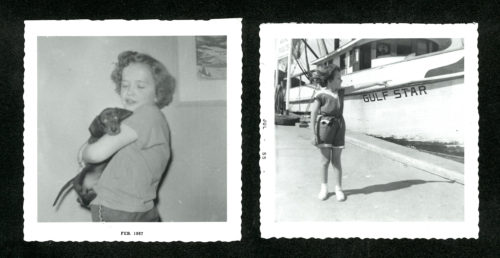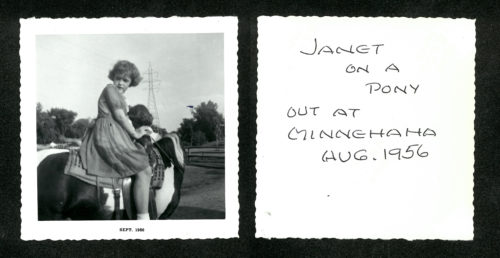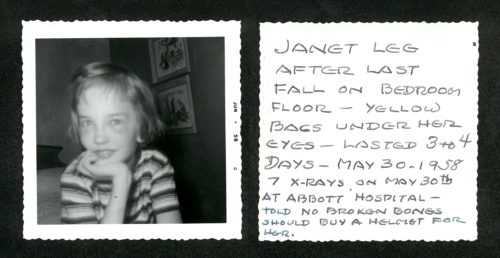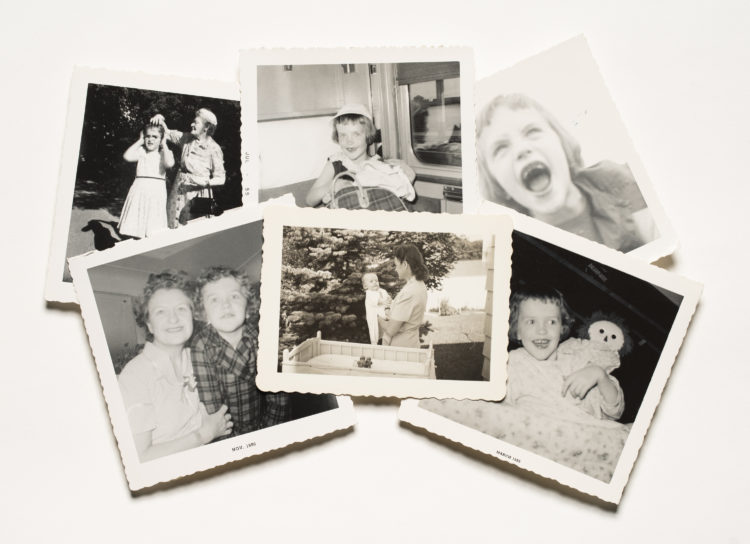At first glance, it might seem an unlikely story from a veteran investigative reporter. But it was those investigative instincts and skills that James Eli Shiffer used to report and write the sweet, sad life story of Janet Lee Dahl, who died 60 years ago at the age of 10.
Now an editor supervising news coverage of Minneapolis and St. Paul for the Star Tribune, Shiffer wrote about Janet in a spare style that at times soars, maybe because of its simplicity. No tinkling pianos or crying violins in the background here, but honest, telling detail and the searcher-reporter’s gently caring heart. “The Heart is an Instrument” is what Pulitzer Prize-winning journalist Madeleine Blais titled a collection of her feature stories years ago. And Shiffer here employs heart along with his data, research and other hard investigative skills to show us why we should care about this one little girl so long gone.
He also, in telling us how he came to know about Janet and her story, offers a lesson in the unobtrusive use of first person.
His interest in Janet’s story began, he explains in the first of several “how I did this” bits woven into the narrative, when his daughter gave him “Talking Pictures,” a book of vintage photographs. One chapter in the photo book was all about Janet, and as he looked through the 15 snapshots taken by Janet’s mother, Gertrude, it became clear that something was wrong.
“The photos show Gertrude’s worries about Janet,” Shiffer told me when I called to ask about his story, which ran June 30 in the Star Tribune. “Then you see a photo of her in the hospital and it’s not clear why. … The documentation is at once incredibly moving and on the other hand baffling.
“Then comes the picture of her in her coffin. Just devastating. Any parent, this is your worst fear, losing a child.”

In three of the photo captions, he saw references to Abbott Hospital, and he wondered if it could be the venerable Minneapolis institution. “The possible Minnesota connection triggered my investigative reflex,” he said. “I love research. I get into a research reverie where I can’t stop looking, wracking my brain about where to find information and how to get to the people who remember. If they aren’t around, how do I get to the records?”
He also has a passion for historical research, and in 2016 the University of Minnesota Press published “The King of Skid Row,” his book on people of the old Skid Row in Minneapolis.
Now, he was looking at photographs more than a half-century old that hinted at a compelling human story. He contacted the photo book’s curator, who pointed him to a man who collected vintage photos at flea markets and had found an album containing Gertrude Dahl’s snaps of her daughter. The collector told Shiffer how he had flipped through the album, thinking he might sell some of the individual photos, until he reached the album’s end, and he wept. “That confirmed to me that the photos had a unique power,” Shiffer said.
The collector agreed to send the photos, and Shiffer and his daughter laid them out on a kitchen table in chronological order. “I didn’t know there were so many,” he said. “We got to see her as a baby, see other relatives, her parents. I was able to really learn a lot about the places she had gone, how her face and body changed as she grew up. Most of the pictures are from 1955 to 1959. I’m assuming Gertrude got a new camera in 1955. Those are the first photos where you start to see Janet in the hospital, getting x-rays.”
At first, he saw Janet’s story as a magazine piece. “I wrote a 5,000-word version. I knew the Star Tribune wouldn’t publish that, but I had to get it out.” After a few tries at starting his story with Janet, his initial editor — aka: his wife — suggested a more general lead that marked the cultural shift from printed to digital collections of family photos, the physical albums’ usual fate — the landfill — and the serendipitous discovery of this collection.
“It was, ‘Why am I reading about this?’ and she was right,” Shiffer said. “It was this transformation of something precious into something worthless. So that was the jumping off point. These pictures were found and the transformation never happened. They still were precious.”
Thus, he begins in the second person, how in a house fire you would rescue loved ones and pets and then the family photos because they are “irreplaceable.” But generations pass and in many cases they become pictures of strangers and eventually get tossed. That could have happened to Janet’s photos, he wrote, but a series of people who came upon the album “felt a deep connection to Janet Lee through those haunting images.”
And here he switches to first person: "I am the latest one."

The writing was an experiment, he said. “I’m at a stage of my career that I wanted to stretch out a little more. First person allows you to speculate. We would never do that in a conventional news story, but here— as long as I was honest and transparent about it — I could share my speculation. It was very liberating.”
He cut his initial draft in half, and “the story got a lot better with trimming,” he said. Did his work editing other journalists play a role there? “Absolutely,” he said. “I’ve always thought being an editor makes a writer better. You look at your own writing differently, more critically.”
The simplicity, the quiet unfolding of the story, sets the tone throughout. “That is a benefit of a newspaper career because we are really beaten into getting the story down to the basics,” Shiffer said. “There is no sin in journalism that is more beaten down than overwriting. Cutting this story, I lost a lot of flowery language I might have felt I could use in a longer piece. Sometimes a little bit goes a long way.“

At every stage, he drew on his experience as an investigative reporter: making lists of people he wanted to reach, documents he wanted to find, facts he needed to know, facts he wanted to know.
“Every great writer is a great reporter,” he said. “You trust your reporting to drive the story. It’s not about finding the best adjectives. It’s telling the feel of the wind on your face that shows you were there, noticing and counting, using all your senses in the reporting, making sure there’s something in your notebook.”
His knowledge of court records and other official document depositories led him to Janet’s 60-year-old death certificate and an autopsy report. “That was the toughest thing,” he said. “I knew the death certificate would be available, but the autopsy report … I didn’t expect to find that. But I called the medical examiner’s office and they said, ‘Oh, yeah, we’ve got it.’ My heart pounded as I ran from my office to the ME’s office to see the thing. … That was so satisfying, to finally learn what had happened and to understand why her mother had built this photo record of her short life.”
He also found his way to an elderly couple, who were neighbors of Janet’s parents after the girl died. The Dahls had lived into their 90s, and Shiffer said it was “reassuring” to learn from the neighbors that the grieving parents had not been totally defined by the loss. “You would think a couple who had a child pretty late in life, in their 40s, to lose that child — that kind of trauma would sink a lot of people. But they didn’t give up. They lived their lives. I found that very sweet.”
To finish the story, of course, he had to visit the Minneapolis cemetery where Janet was buried, close to her parents, in a place where she had spent a good part of her childhood. “It wasn’t just the grave,” he said. “It was that she could see her final resting place from her window. She knew that place. It was a part of her childhood landscape.”
Standing there, remembering the photo that showed Janet in that precise spot, surveying the landscape, was overwhelming. His description leads into the simple, powerful ending to the story.

Reader reaction was powerful, too. Since the story ran, Shiffer has heard from more people who knew Janet or her parents, childhood friends and former neighbors. There is talk of a memorial service.
“You don’t know what to expect when you put a story out there these days,” he said. “We are in such a polarized era. I worried that some people might find it morbid or invasive. But the emotional reaction has been very reassuring. I’m not sure I’ve ever had a reaction like this to a story I’ve written. I think it helps make people understand why we’re here. Journalism has many roles, and one of them is to tell a story that tugs at your heart.”
For all that, he wasn’t able to answer all the questions he had.
“I’m not sure I’ll ever find out how her photos ended up in a flea market stall in Southern California,” he said. “But because they did, we are all the keeper of Janet now.”



